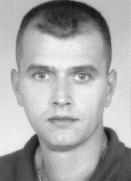A deep overbite is one of the most common malocclusions in orthodontic practice. The occurrence of traumatic occlusion due to a deep bite is fortunately rare, but when it does happen, the results can be devastating. I remember one case of a mentally handicapped young adult whose deep bite impinged on the incisal papilla to the extent that it had abraded the palatal aspects of the upper central incisors longitudinally and penetrated the root canals from the level of the cementoenamel junction to about 5mm from the root apices. It is interesting to note that this patient had a long history of seizure disorders, and that when a fixed bite plate was placed to cover the abraded area of the palate and the upper central incisor roots, the seizures stopped. This is not to say that the bite plate stopped the seizures, but the timing certainly makes you think that it was more than a coincidence.
Outside of these few instances of traumatic occlusion, a deep bite is seldom an esthetic concern of the patient, and therefore is rarely the sole reason for seeking orthodontic therapy. Yet it is so pervasive that during our graduate school days, we are taught that opening the bite is among the first steps we take in full treatment, concurrently with the alignment of crooked and rotated teeth--hence, the "leveling and alignment" phase.
Similar articles from the archive:
Diagnosis of deep bite seems relatively uncomplicated at first glance. From a pragmatic perspective, most of us deem a bite "deep" if the upper incisor overlaps the lower too far to permit proper bracket placement on the lower incisor. In this case, one of the goals of bite opening is to allow lower bracket placement. Whether that is a biological imperative is debatable, but it is certainly a necessity of treatment, analogous to G.V. Black's "convenience form" in cavity preparation.
On closer investigation, however, the underlying components of deep bite are a little more complicated. While the problem is certainly multifactorial, there are two main anatomical focuses: one in the anterior dentition, one in the posterior, each demanding to be addressed if the deep bite is to be treated successfully. In low-angle cases, the major concern is undereruption of the molars and premolars, which can readily be seen on either the panoramic radiograph or the ceph. This situation can be quantified, using any of several cephalometric analyses that measure the eruptive heights of the posterior dentition from a reference point on the mandible (usually the inferior border), but a simple observation of the posterior root tips in proximity to the alveolar canal or the inferior border of the mandible is generally enough for routine diagnosis. On the other hand, while deep bite is rare in high-angle cases, it does occur--the seizure patient mentioned above had an extremely high mandibular plane angle. In such a case, the eruptive height of the posterior dentition is usually within a normal range, but the eruptive heights of the anterior teeth are excessive. Again, these can be measured cephalometrically using the ANS-PNS plane as a horizontal reference, but a qualitative assessment may be adequate for routine diagnostic purposes.
Whatever the primary cause of the deep bite--whether it's undereruption of the posterior teeth or overeruption of the anterior teeth--the cardinal guide in our decision-making process must be the lip-smile line relative to the anterior dentition. If this is not properly established, the smile resulting from our treatment mechanics may not be acceptable, even if the occlusion is.
Bite-opening mechanics involve a combination of treatment strategies to extrude the posterior teeth and intrude the anterior teeth simultaneously until the smile line is in the position we deem ideal for both function and esthetics. An anterior bite plate allows passive eruption of the posterior teeth while intruding the anterior teeth that are in contact with the plate. Although this procedure has been deemed "indeterminate tooth movement" by some, it is a time-tested technique with a high degree of success, to the point that a variety of different fixed bite-plate designs have been developed to overcome any problems with patient compliance. Archwire alternatives to bite plates can be either segmental, like many of the intrusion arches that have appeared over the years in the pages of JCO, or continuous. The continuous archwires achieve bite opening through simultaneous incisor intrusion and premolar eruption, either with a succession of increasingly stiff archwires or with precurved archwires, usually made of nickel titanium. Until relatively recently, the segmental approach has allowed the most precise correction of deep bite. With the other methods, it is more difficult to fine-tune the proportion of posterior extrusion and anterior intrusion. Of course, miniscrews now provide more exact control of anchorage in all planes of space.
In this issue of JCO, Drs. Giancotti, Mampieri, and Greco present yet another option, showing a series of cases with normal skeletal patterns in which deep bites have been corrected with Invisalign therapy. As this treatment modality evolves, its ability to deal with increasingly difficult malocclusions continues to expand. The selective application of retention buttons, based on the computerized ClinCheck program, seems to allow predictable amounts of anterior intrusion and posterior extrusion, resulting in highly selective bite-opening mechanics. It should prove to be a valuable addition to our deep-bite treatment repertoire.
RGK


